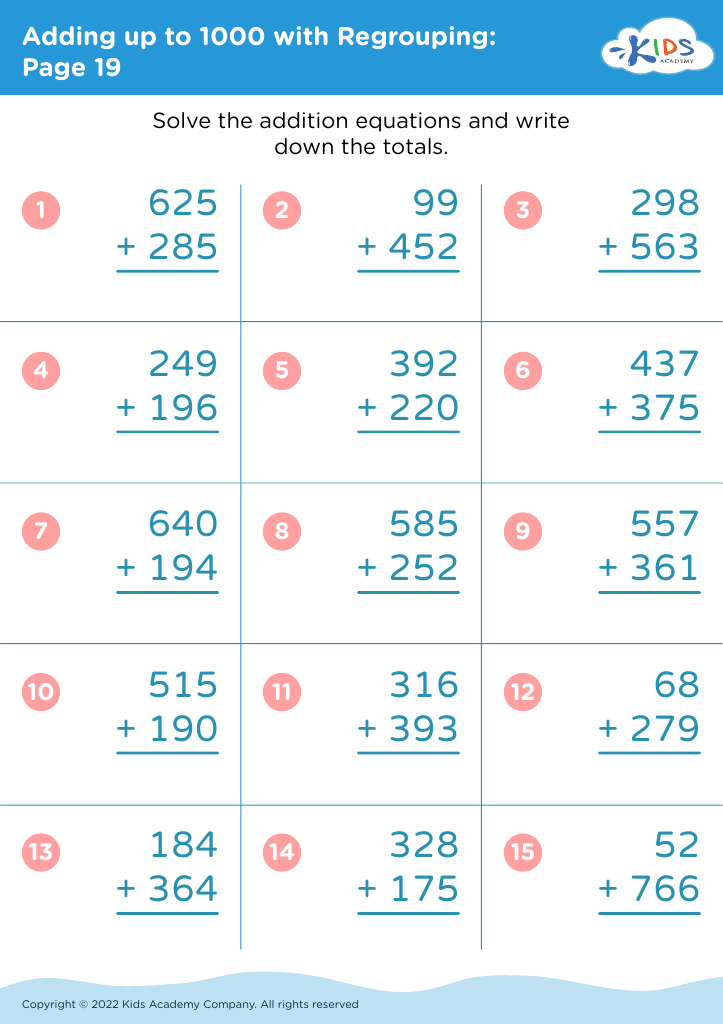Recognizing Patterns Adding up to 1000 with Regrouping Worksheets for Ages 6-7
4 filtered results
-
From - To
Enhance your child's math skills with our "Recognizing Patterns Adding up to 1000 with Regrouping" worksheets, tailored specifically for ages 6-7. These engaging worksheets focus on helping young learners identify patterns while mastering the concept of addition and regrouping. By recognizing numerical patterns, students will build a solid foundation in arithmetic, boosting their confidence and reducing math anxiety. Each worksheet is designed to provide a blend of interactive exercises and enjoyable challenges, ensuring that learning remains fun. Empower your child to discover the joy of math and develop essential problem-solving skills with our comprehensive resources!
Recognizing patterns in adding numbers up to 1000 with regrouping is essential for children aged 6-7 as it lays a strong mathematical foundation and enhances critical thinking skills. At this age, students begin transitioning from concrete understanding to more abstract concepts. Teaching them to recognize patterns helps simplify the addition process and boosts their confidence in handling larger numbers, making math less intimidating.
When children learn to regroup, they develop a better understanding of place value, which is crucial for future math skills, including addition, subtraction, and multiplication. By recognizing patterns, such as pairs that sum to ten or manipulating tens and hundreds, children can more easily solve complex problems.
Furthermore, engaging with patterns enhances cognitive development, encouraging students to make connections and predictions. This skill translates to various areas of learning, fostering an inquiry mindset that supports lifelong learning. Support from parents and teachers at this stage also promotes a positive learning environment, motivating students to explore math actively rather than fear it. Ultimately, focusing on patterns and regrouping equips children with tools that transcend math, contributing to their overall academic success.


















